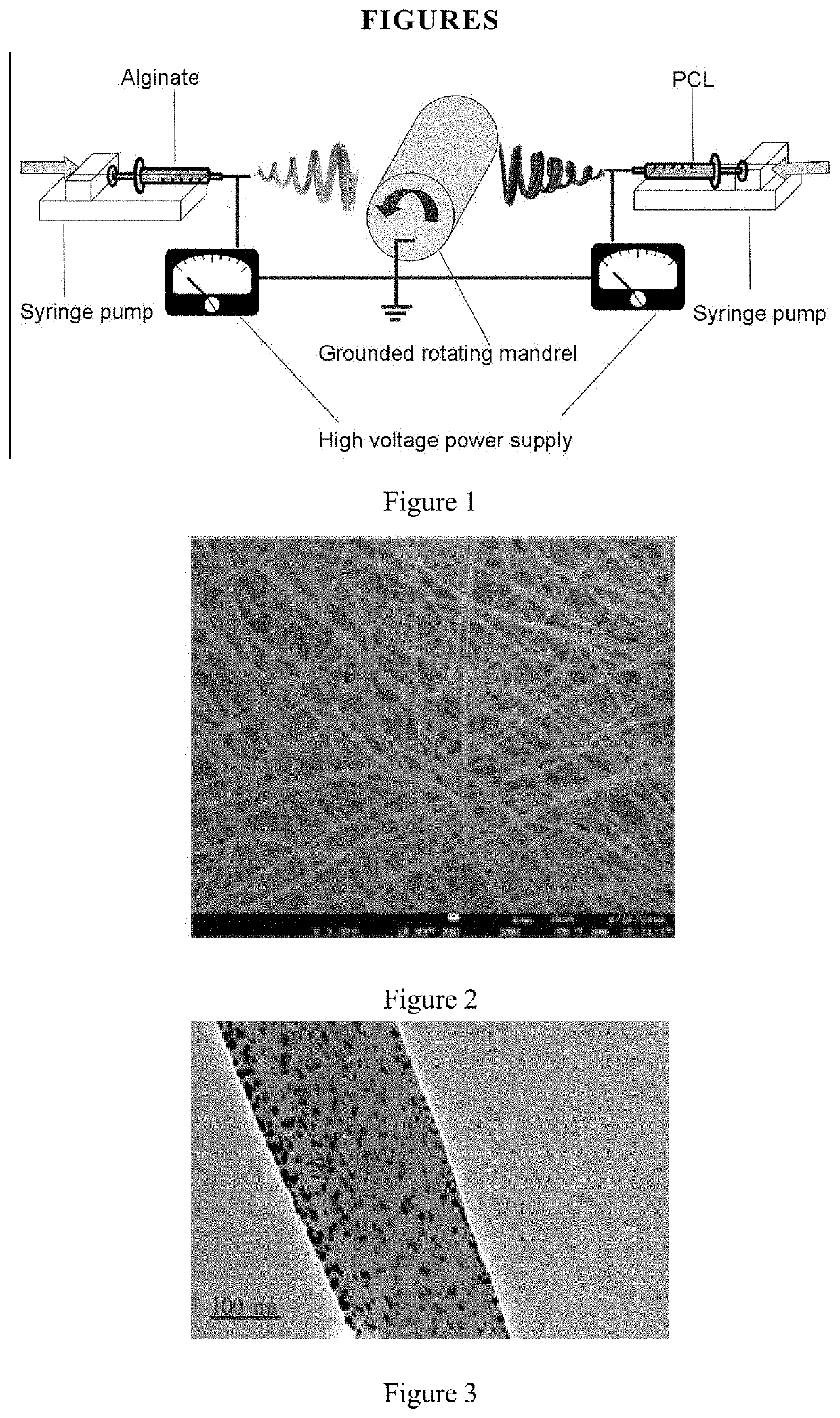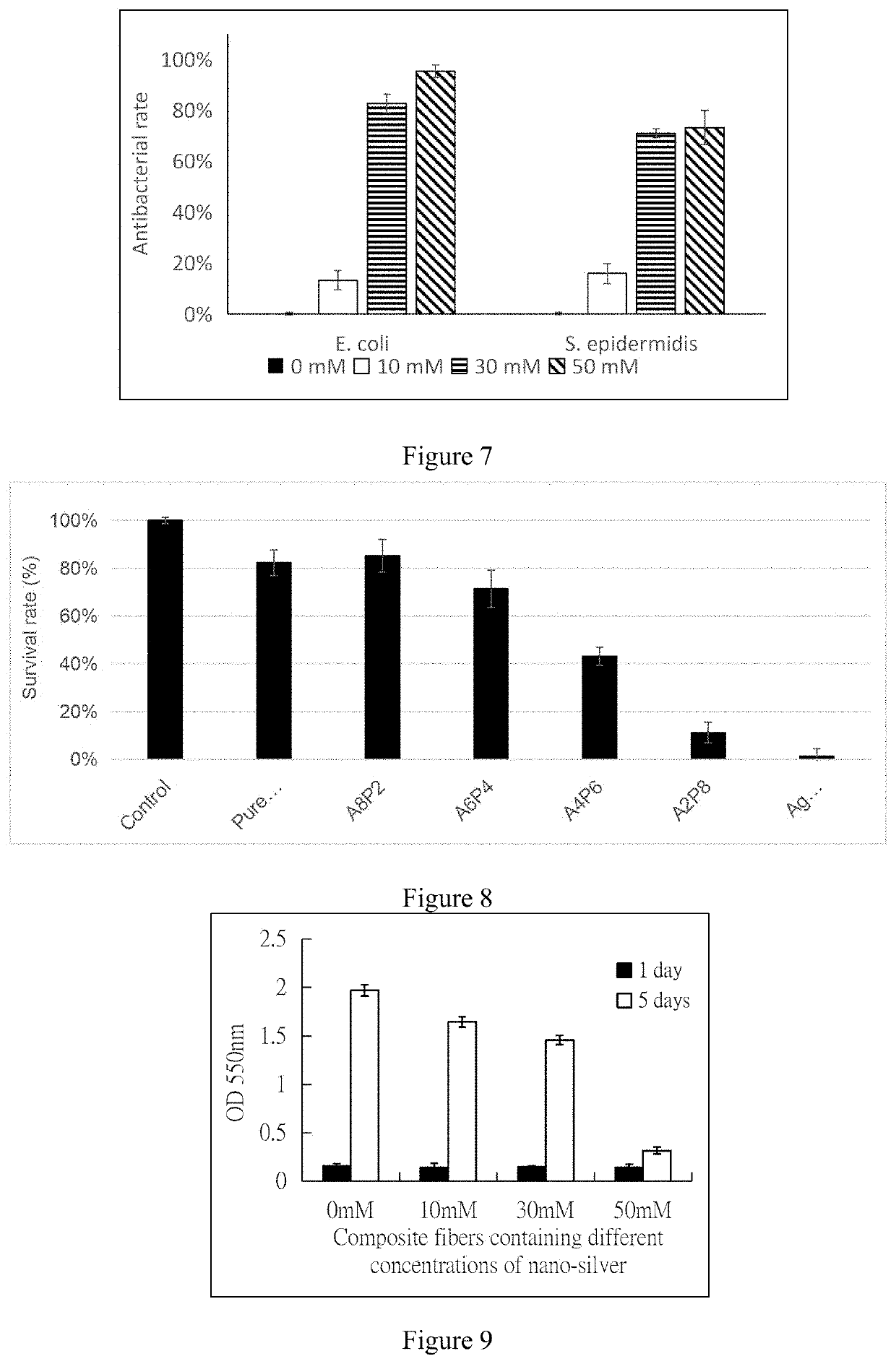Composite fiber
a technology of composite fibers and fibers, applied in the field of composite fibers, can solve the problems of reducing the elasticity of the fiber, so as to achieve the effect of providing passive protection, and reducing the pain of patients
- Summary
- Abstract
- Description
- Claims
- Application Information
AI Technical Summary
Benefits of technology
Problems solved by technology
Method used
Image
Examples
examples
[0060]Production of Composite Fibers
[0061]Preparation of Alginate / Polyethylene Oxide (PEO) Spinning Solution
[0062]A 5 g of spinning solution was prepared by mixing 3.33 g of alginate stock solution, 1.0 g of PEO stock solution and 0.525 g of co-solvent (dimethyl sulfoxide) / surfactant (Triton X-100), and adding 0.145 g of water, so that the final concentration of alginate was 4 wt %, PEO was 2 wt %, dimethyl sulfoxide was 10%, and Triton X-100 was 0.5%, and the solution was heated and stirred (at 50° C., 60 rpm) for 2 days, the bubbles were removed by centrifugation.
[0063]Preparation of PCL / PEO Solution
[0064]4 g of solution was prepared from 1.8 g of polycaprolactone (PCL) stock solution and 1.8 g of PEO stock solution, and then 0.4 g of dimethylformamide (DMF) was added to obtain a solution, of which the final concentration of PCL was 4.5 wt %, PEO was 3.6 wt %, then the solution was heated and stirred (40° C., 60 rpm) for one day.
[0065]Preparation of 30 mM of Ag PCL / PEO Spinning So...
PUM
| Property | Measurement | Unit |
|---|---|---|
| Molar density | aaaaa | aaaaa |
| Molar density | aaaaa | aaaaa |
| Molar density | aaaaa | aaaaa |
Abstract
Description
Claims
Application Information
 Login to View More
Login to View More - R&D
- Intellectual Property
- Life Sciences
- Materials
- Tech Scout
- Unparalleled Data Quality
- Higher Quality Content
- 60% Fewer Hallucinations
Browse by: Latest US Patents, China's latest patents, Technical Efficacy Thesaurus, Application Domain, Technology Topic, Popular Technical Reports.
© 2025 PatSnap. All rights reserved.Legal|Privacy policy|Modern Slavery Act Transparency Statement|Sitemap|About US| Contact US: help@patsnap.com



